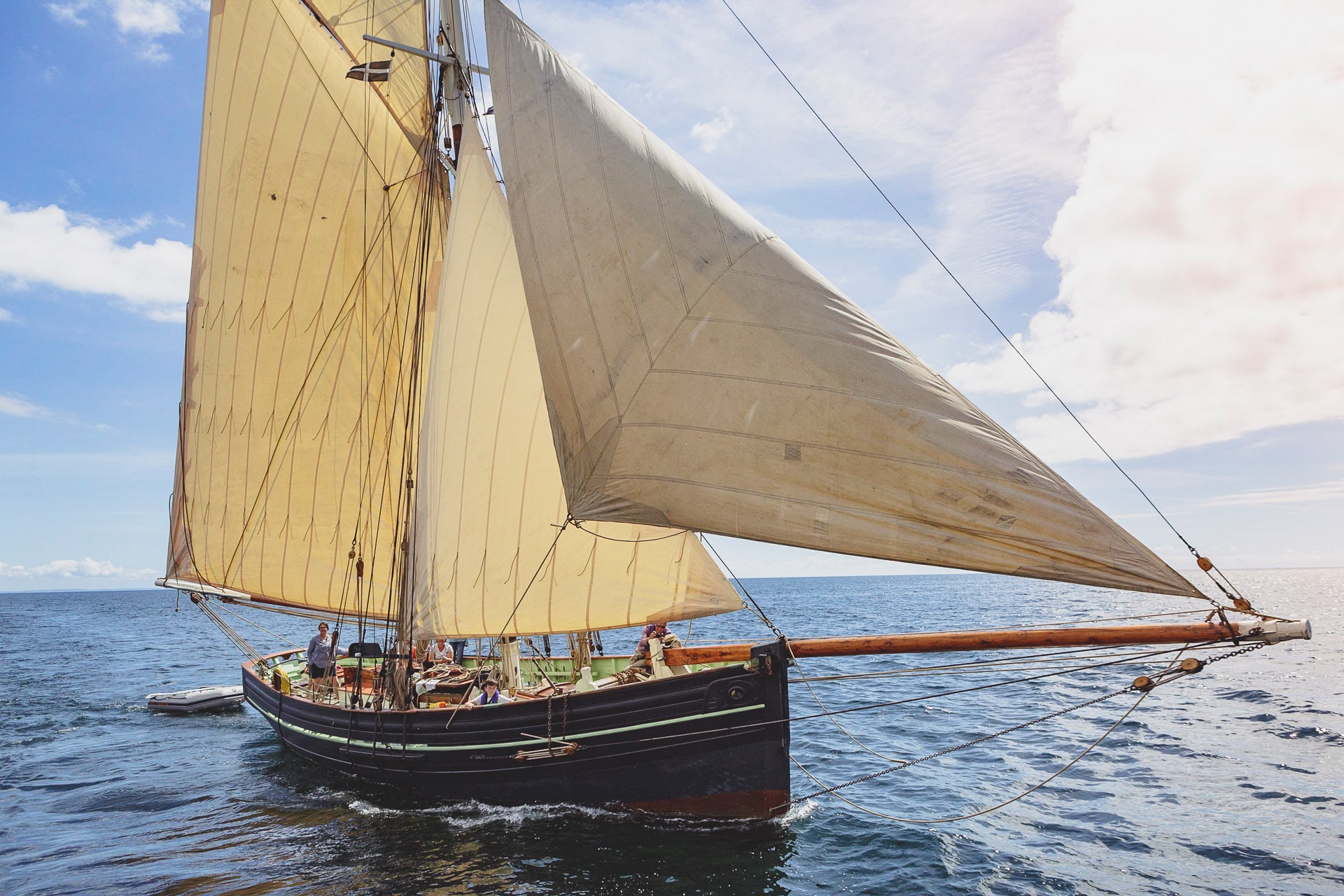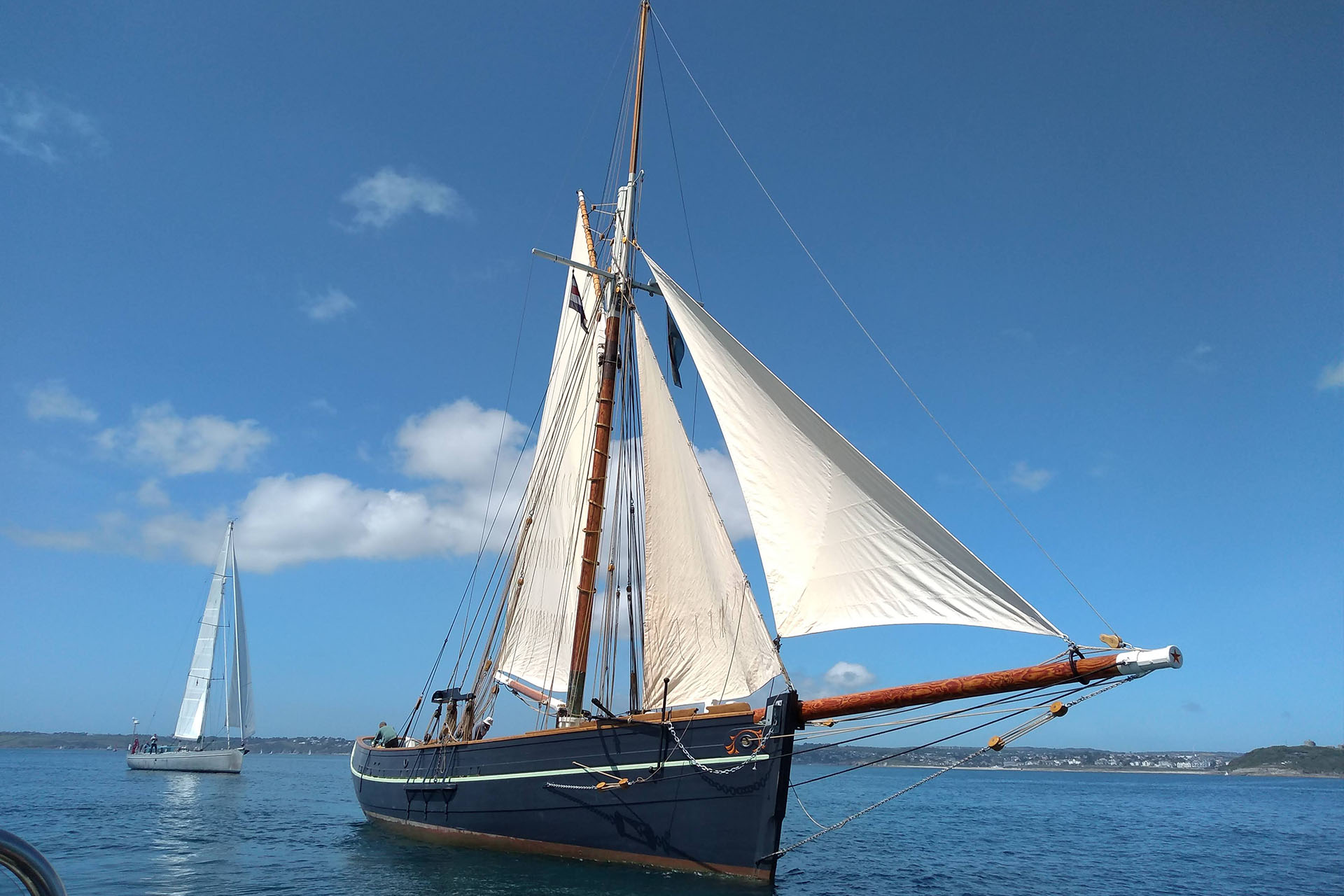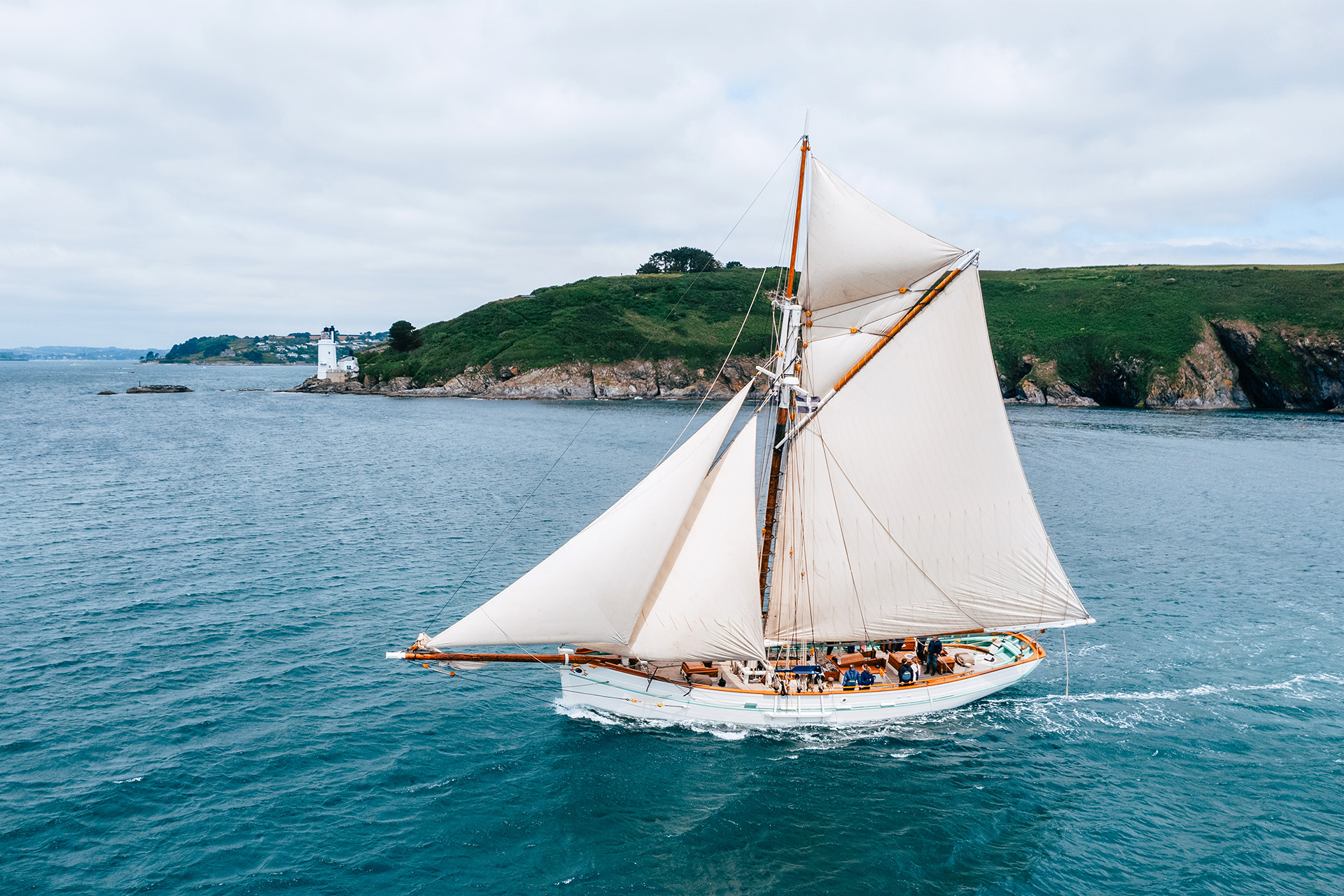
Imagine, it’s 1837 and you are the captain of an enormous wooden merchant ship, sailing into dangerous waters full of sandbars and submerged rocks, attempting to reach port after a lengthy voyage. Your vessel is fully laden with a precious cargo of cotton and tobacco and both your crew, and yourself, are utterly exhausted after weeks at sea, wishing nothing more than for someone to take the helm from you in these last, most difficult moments. Reaching for your brass telescope you scan the horizon for a certain something that gives a glimmer of hope, then finally you spot it: a boat, perhaps 50 feet or so, making towards your starboard bow at a galloping pace. Exhaling a huge sigh of relief, you instruct your men to ‘heave-to’, able to relax at last, for the pilot cutter is here.
This may sound a little dramatic but pilot cutters were often the saviours to larger vessels needing to head into port. Swift, agile sailing boats they had experienced sailors at the helm, each equipped with in-depth knowledge of local waters and able to safely guide the bigger ships safely into harbour, often through treacherous waters. Operated as a freelance service, pilots would strive to lead as many ships into port as they could to ensure a hefty profit. The more nimble the vessel, the quicker a larger ship could be reached which in turn meant that faster vessels became more profitable.
Originally based on single-mast fishing boats, pilot cutters evolved a deep hull shape, a gaff rig and a long bowsprit with room for jibs in order to increase speed and manoeuvrability. The design of the cutters changed rapidly between the 17th-19th Centuries, sped up by the increased competition for business.
Constantly outdoing other pilot cutters, of which there were many, was a top priority. Like all competitive evolutionary traits, survival favoured the fittest – and in this context, the pilot cutters not only needed to be fast and nimble, but they also needed to strike a balance between speed and crew size – more crew meant a higher wage bill. Many of the smaller cutters working the Bristol Channel could be operated with just two crew; the skipper and the apprentice. In some cases, if there was a ship to be brought up river, the skipper offered his services as a pilot, leaving the cutter in the hands of the apprentice to sail it back.
However, speed and agility weren’t the only requirements – ‘seaworthiness’ was also an essential part of the design brief. Off the coast of Cornwall and the Isles of Scilly pilot cutters would fill their berths with experienced pilots before waiting out in the Western Approaches, often for several days, patiently anticipating approaching vessels. As soon as tall masts loomed on the horizon, the Captain would drop the knowledgeable Pilot off to schooners, brigs and barques to sail as fast as possible, ensuring they were first to arrive and offer their services.
As ever, times change and the arrive of maritime steam power saw the role of the traditional wooden cutter change indefinitely at the start of the 20th Century. Many traditional pilot cutters were sold off as private yachts to make room for the faster, more manoeuvrable steamboats. Yet the name ‘cutter,’ with its connotation of the provision of a maritime service, lived on and is still used today for customs boats in both the UK and the US.


Proving that the legacy of the Pilot Cutter is strong, Cornish Shipwright Luke Powell has dedicated much of his time over the last 20 years to faithfully reconstructing numerous Scilly pilot cutters. Luke has also established the Truro-based ‘Rhoda Mary’ Shipyard where, along with his team of skilled shipwrights, he has recreated a replica of the Falmouth pilot cutter “Vincent” using only traditional wooden boat building methods.
These fantastic traditional boats offer a thrilling sailing experience to both the novice and seasoned sailor and VentureSail are thrilled that both ‘Pellew’ and ‘Agnes’ will be part of our Cornish sailing charter fleet. Sailing on the very waters on which they plied their trade so many years ago, both vessels provide the opportunity for guests to taste a little bit of history as these nifty wooden boats skim their way across the waves, imagine a larger, tall-masted wooden vessel is in their wake.
View Pellew’s voyages as she sails the coast of Cornwall, the Isles of Scilly and the Hebrides.
Sail with Agnes as she explores Cornwall and the Isles of Scilly.












